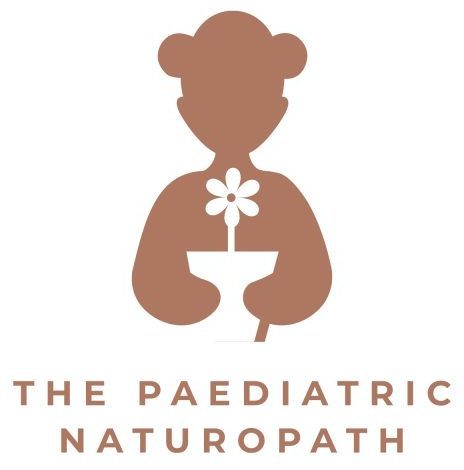Reflux occurs when one’s stomach contents flow up past the lower oesophageal sphincter (LES) into the oesophagus (LES = the valve which controls passage of food and fluids into and from the stomach).
A visual way to conceptualize reflux is to use an analogy of a hot water bottle with a loose cap. If you fill this “bottle” (the stomach) and lay it down flat, the contents will flow out past the cap. If the bottle is vertical and you squeeze it, fluid will also spill over the top.
How much fluid is lost depends on how full the “bottle” is, the angle the “bottle” is positioned, how much compression is occurring, and how loose the “cap” is.
A certain amount of reflux is normal
Typically, both children and adults reflux approximately five times after each meal.
However, most of us do not notice or are not bothered by this refluxing.
This is known as physiological reflux and children with this type of reflux are called ‘happy spitters’. They are no concerns with their feeding, they are thriving and there are no other worrying symptoms such as pain and irritability.
When reflux gets to be a problem, your child may be given a diganosis of gastro oesophageal reflux disease (GORD).
When should I be worried about reflux
Problematic reflux will feel similar to a child as heartburn does to an adult. It can cause irritating and uncomfortable symptoms that affect a child’s mood and behaviour.
It should be noted that any forced movement of stomach contents out through the mouth is not reflux but vomiting. Projectile and/or excessive vomiting should always be assessed by a medical professional.
Signs and symptoms of problematic reflux include
Regurgitation or spills without force out of the mouth, just in the mouth or the throat alongside
- Poor appetite or feeding refusal
- Excessive crying
- Irritability or back arching during or after feeding
- Pain in the chest or upper abdomen
- Uncomfortable after feeding
- Slow weight gain
- Chronic cough/ wheeze
- Sleep interruptions and arousals
Reflux can be a major factor in fussy eating– whether a child is breastfed, bottle fed or eating solids. Instead of learning eating is pleasurable and satisfying, the child with reflux learns that eating is uncomfortable, either from the experience of regurgitating and/or from the burning sensation that can occur when they reflux.
What are the worst foods for reflux?
There are a number of common foods that trigger reflux- these include dairy, soy, chocolate and wheat.
Dairy and soy
Cow’s milk protein allergy or CMPA can affect the proper motility of the digestive system which can increase the number of reflux events and potentially lead to problematic reflux.
A soy protein intolerance can also be associated with problematic reflux. Children who are sensitivity to dairy often will not do well on soy either.
Chocolate
Some foods including chocolate have been found to affect the proper functioning of the valve that keeps the contents of your stomach in your stomach. The valve becomes too relaxed allowing for reflux to occur more than it should.
Wheat and refined foods
Wheat can be a common food sensitivity for those who suffer from problematic reflux as it can disrupt the proper digestion and movement of food down the digestive tract. Refined wheat products such as white bread and pasta, cakes and biscuits made with plain flour are particular culprits. You may find it is the over-eating of these foods at one sitting that is a big factor at play.
Fried/greasy foods and seasoned/ spicy foods
These foods can increase the length of time your food sits in your stomach for as it works on digesting it. The longer food sits in your stomach for, the increased risk of pressure building and causing reflux.
Carbonated drinks such as soft drinks
Not something a young child should be having anyway as it is awful lot of sugar for a little one. But it is worth mentioning here as fizzy drinks will contribute to reflux as they increase the pressure in the stomach affecting the valve that keeps the stomach contents there and not moving back up the throat.
Tomatoes, oranges and orange juice
These foods should be avoided if there seems to be a lot of pain associated with reflux. With repeated reflux, the oesophagus and throat can become irritated and inflamed. These foods will only add to the pain.
Remove these foods from your child’s diet for 3 weeks and see if their symptoms improve. It is recommended to keep a food and symptom diary to help you track their progress and identify any further foods that me triggers.
If your child is exclusively breastfed, the foods mum is eating may be triggering their reflux episodes. It is important for mum to remove the common trigger foods for at least 3 weeks to see if their child becomes more settled. If there is little improvement, mum will need to consider trialling a removal of other common food sensitivities including egg and nuts.
If your child is formula-fed, it would be worthwhile trialling a non-cow’s milk formula. Some kids find goat’s milk formula sits well with their children while others find goat’s milk can also be problematic. There are plant-based formulas or extensively hydrolysed milk formulas that may be more appropriate for sensitive tummies.
If you need support in guiding you through an elimination diet or are having trouble achieving improvements, get in touch with me today so we can take a thorough look at what is going on and how best to help.
References
PMID: 21453810
PMID: 31258618
PMID: 31489226




